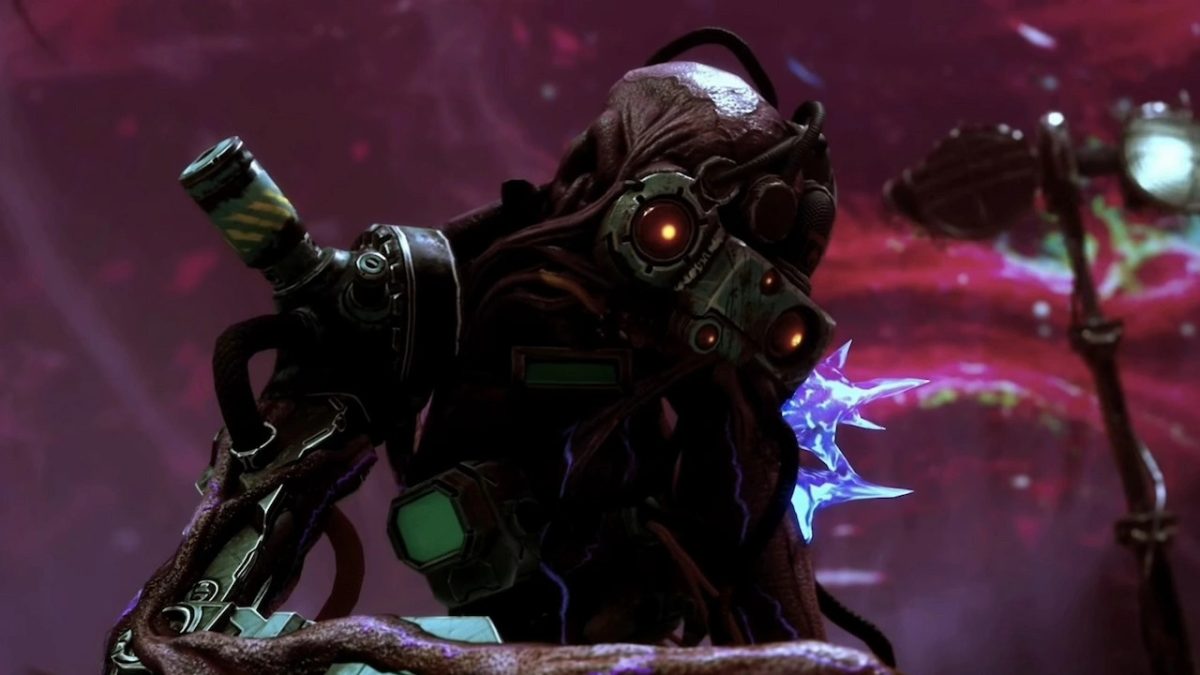Can Using AI Ever Really Be Thematically Appropriate?
Should an AI voice an AI?

Ethically speaking, AI-generated art of any kind tends to be a bit of a cesspool. There are so many ways in which AI is problematic, from being programmed with stolen work to being used instead of a real artist.
But are there ever situations in which using AI instead of a human makes sense?
Dead by Daylight recently introduced its new killer, Hux, a.k.a. The Singularity. Hux is a Rogue AI who, after gaining sentience, devotes itself to improving its body and replacing the humans who control it. Not only is Hux the first robot/AI killer in Dead by Daylight, but it is also, seemingly, the game’s first character to use an AI-generated voice.
This is a tricky situation: On one hand, this is exactly what a lot of artists have been concerned about: AI being used to replace them and the work they do. Conversely, it’s hard to get mad at the developers for using AI with their AI killer.
So what is the right answer in this case? Is it ever appropriate to use an AI speech bot over a human voice actor?
The circumstances of AI usage
In many ways, the theming of this DBD chapter is on point and the AI voice is just the cherry on top. Even if you can’t immediately tell that this is an AI voice, the monotone reading of a lot of the words, whether they’re sympathetic or hateful, adds to how unsettling the killer is. Much like using stock photos or stock music, the use of an AI-generated voice for a killer AI feels more like a tool to help round out the character.
We can also consider things from the developers’ perspective. Behaviour Interactive, while a successful game developer, is not a triple AAA company and has been known to reuse assets and voice actors. In fact, many of the developers have been either voice actors or visual inspirations for the game’s survivors and killers (the game’s art director Filip Ivanovic has voiced The Trapper, The Wraith, The Hillbilly, Leatherface, Freddy Krueger, Ghostface, and survivor Jeff Johansen in the game).
In other cases, it also depends on if the AI bot was trained on a specific actor’s voice with permission. James Earl Jones has recently retired from voicing Darth Vader but worked with Disney, Lucasfilm, and the Ukranian start-up Respeecher to capture his vocal likeness in AI so Vader can live on. (Another case of thematic irony with Vader having previously been described as “more machine than man.” Now he’s literally voiced by a machine.)
What AI misses
On the other hand, we may have lost something special in making DBD’s first AI not voiced by a human.
Some of the best performances in science fiction are when actors are portraying an android or AI. HAL-9000 is fascinating in many ways but especially since his voice arguably emotes more than the human astronauts’, who are all so stoic and monotone you could easily mistake them for androids. There’s also Arnold Schwarzenegger’s iconic Terminator, who is arguably the most iconic android in Western fiction (sorry, Data). There’s something delightfully uncanny about humans pretending to be non-human.
This also doesn’t bode well for the future of DBD killers. While the AI voice may be appropriate for the game’s first robot killer, if Behaviour tries to use it with the human killers, the lines are likely to sound stilted or unnatural. And that’s not even getting into the issue of the rights of voice actors.
The game had a previous controversy around the voice actor for its Hellraiser DLC killer, Pinhead. Pinhead’s main actor, Doug Bradley, was reportedly not informed of another actor voicing his character, despite his likeness being used in the game. The voice lines disappeared from the game for months, before being replaced with lines done by Bradley.
That many companies are increasing their use of AI tools/bots is a cause for concern at the very least. Just because you can have a book read to you by an AI doesn’t mean it’s a good experience, even if the book is about AI.
So where does that leave us?
Realistically, there might not be a singular answer to the question of when using AI is acceptable. What works for Dead by Daylight may not work out for another game, and vice versa. In any case, the use of AI, much like other technologies like deep fakes and de-aging, is only going to increase from here. That doesn’t mean we can’t hold developers accountable and call them out when they cross ethical boundaries or sell poor products. If anything, our dollar is likely what will speak to these companies and get them to listen to us.
What do you think? Do you think AI can ever be used in a way that’s appropriate for art?
(featured image: Behaviour Interactive)
Have a tip we should know? [email protected]
